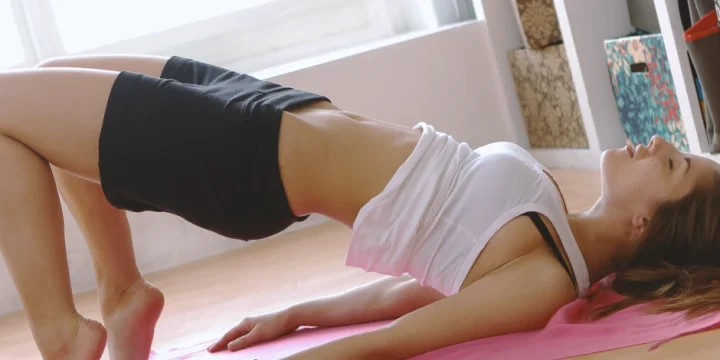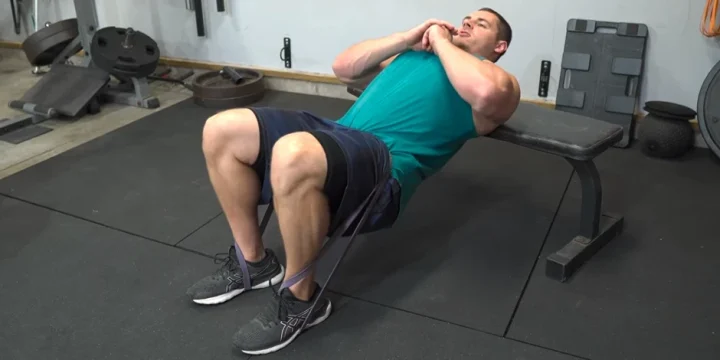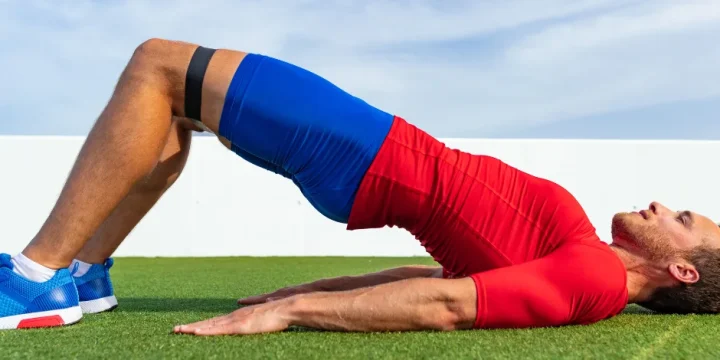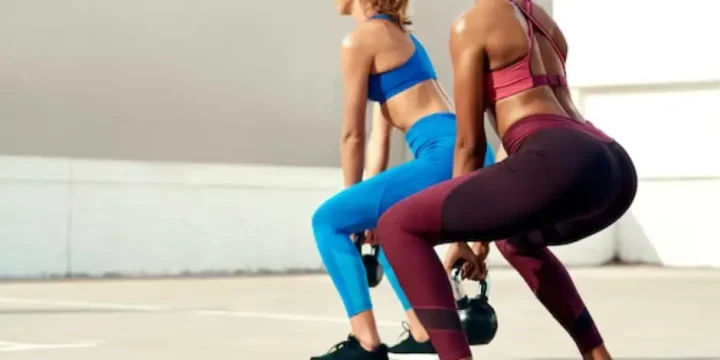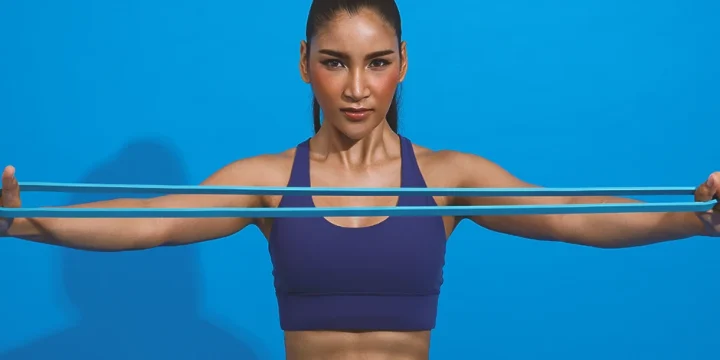Hip thrusts are the unsung heroes of glute training. They’re one of the best exercises for developing glute strength and muscle mass.
With over a decade of experience helping clients and readers sculpt their ideal physiques, I've seen how this exercise fires up the glutes like no other.
In this blog, we’ll look at the art of performing hip thrusts with perfect form and beginner-friendly variations of this exercise.
Let’s begin.
Quick Summary
- To do a hip thrust movement, start by positioning your upper back against a bench, place a weighted barbell over your hips, and thrust upwards by extending your hips, keeping your chin tucked and spine neutral.
- Hip thrust variations include the glute bridge, Smith machine hip thrust, and resistance band hip thrust.
- According to the Journal of Sports Science and Medicine, building your glute strength through hip thrusts will add more power to regular movements such as running, jumping, and squatting.
- Based on my experience, the Smith machine hip thrust is an excellent tool for safely maximizing glute strength and development.
How To Do Barbell Hip Thrusts With Perfect Form

Here’s how to perform hip thrusts with perfect form:
1. Starting point
- Begin by sitting on the ground with a loaded or empty barbell over your hip bones.
- Have a dedicated hip thrust bench right behind you.
2. Preparing for the lift
- Lean against the bench with your shoulder blades pressed firmly against it.
- Keep your feet firm on the ground, about shoulder-width apart, and bend your knees.
- Support your body weight and the weight of the barbell with your shoulders and feet.
- Keep your chin tucked and your spine neutral.
3. Lift
- Lift the barbell by moving your hips upward. The majority of your weight is supported on your heels, and the rest is on your shoulders.
- Lift the barbell until your legs form a 90-degree angle.
- Squeeze your glutes at the top of the motion for maximum muscle engagement.
- Lower back down to the starting position, and repeat for reps.
I always advise my clients to have a personal trainer or a gym buddy nearby to help place the barbell on their hips before the lift and help them take it down after.
By avoiding common mistakes and keeping safety tips in mind, like maintaining proper form and avoiding overextension, can prevent injuries and ensure the effectiveness of the exercise.
Adding It To Your Workout Split

If you want to add the hip thrust to your regular workout routine, here’s one of the most effective ways to include it, based on what has worked for my clients:
- Monday: Legs (Do 3 sets of hip thrusts for 10 reps each)
- Tuesday: Chest and triceps
- Wednesday: Conditioning
- Thursday: Back and biceps (Do 2 sets of hip thrusts for 12 reps each)
- Friday: Shoulders
- Saturday and Sunday: Active rest or conditioning
Now, for clients who want to specifically build large and strong glute muscles, I always advise them to dedicate a separate day to this muscle.
In the example of the above workout split, you can do a complete glute workout on either a Wednesday or Friday.
You also have the option of doing the hip thrust on upper-body workout days.
What Are the Benefits of Doing a Hip Thrust?

The benefits of doing a hip thrust include stronger gluteal muscles and glute hypertrophy.
From my experience as a fitness trainer, these are the improvements I've consistently seen in my clients.
Here are some other hip thrust benefits:
- Compound movement: The hip thrust is a compound movement that works the gluteus maximus, gluteus medius, gluteus minimus, hamstrings, adductor magnus, erector spinae, and quadriceps.
- Better athletic performance: Glutes are involved in many athletic movements like running, jumping, and squatting. According to the Journal of Sports Science and Medicine, building your glute strength through hip thrusts will add more power to these movements [1].
- Pelvic alignment: Having strong glutes prevents pelvic imbalances that can lead to bad posture, as per the reports on the National Library of Medicine [2].
- Reduced back pain: Research published by the Journal of Physical Therapy Science shows that strong glutes reduce your chances of lower back pain [3].
“Your glute muscles are typically not that engaged throughout the day. The quads do a lot of the heavy lifting.”
- Dr. Stephanie Marango, MD, Anatomy Expert
- Greater Range of Motion at the Hip Joint: The hip thrust allows for a significantly greater range of motion at the hip joint compared to the knee and pelvic-trunk joints, which can contribute to better muscle development and strength.
- Enhanced Hip Extensor Activation: The hip thrust exercise significantly activates the hip extensor muscles, more so than conventional exercises like squats or deadlifts. This makes it highly effective for developing the hip extensor musculature.
Related Articles:
Variations

For those looking to modify the exercise to suit different fitness levels, consider variations like the bodyweight hip thrust for beginners, or adding weights for more advanced practitioners.
These variations allow you to work the range of motion and build strength progressively.
Based on my extensive experience as a fitness trainer, here are some easy hip thrust variations to fire your glutes:
1. Bodyweight Hip Thrust
The bodyweight variation is perfect for beginners. It lets you work the range of motion on the exercise without bearing any load, allowing you to perfect your form.
Here’s how you do it with good form:
- Sit on the ground with your knees bent and your feet flat on the floor.
- Lean back so that your upper back is resting against a sturdy bench, box, or step. Your feet should still be flat on the floor, hip-width apart.
- Keeping a tucked chin and neutral spine, brace your core and squeeze the glutes slightly.
- Push through with your heels and lift your hips until your body forms a straight line from your shoulders to your knees. Press your knees outwards against the band throughout the movement.
- Pause and squeeze your glutes tightly. Then, slowly lower your hips back down.
- Repeat for reps.
2. Glute Bridge

A glute bridge is a simple and effective bodyweight exercise that targets your glutes and hamstrings.
Here’s a step-by-step guide on how to perform a proper glute bridge:
- Lying down on your back, place your feet flat on the floor, hip-width apart, with bent knees. Keep your arms to the side with your palms facing down.
- Draw your belly button in towards your spine to activate your core.
- Push through your heels, and lift your hips off the ground by squeezing your glutes.
- At the top of the motion, your body should form a straight line from your shoulders to your knees. Avoid tilting your hips.
- Hold this position for a few seconds and lower yourself back down.
- Repeat for reps.
Related: Best Glute Exercises for Mass
3. Dumbbell Hip Thrust
This variation is an effective way to incorporate a barbell into your workout routine and build strength.
To do dumbbell hip thrusts, follow the same steps for a bodyweight hip thrust. The only difference is that you’d hold two dumbbells, one on each thigh.
We recommend performing effective dumbbell exercises by securely holding them horizontally against your thighs.
You can also them vertically if that’s more comfortable, as long as they’re large enough to balance on your thighs.
4. Smith Machine Hip Thrust
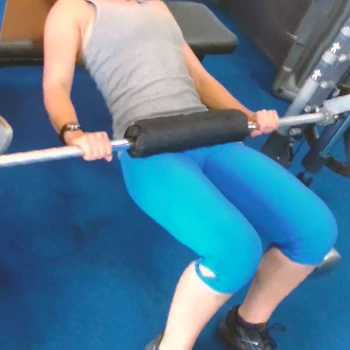
The Smith machine hip thrust, a safer variant of the barbell hip thrust, enables heavy lifting without a spotter.
Consult your gym instructor for correct racking techniques on the Smith machine. This ensures quick reracking in emergencies.
Perform these like regular hip thrusts, but the Smith machine guides the weight in a perfect vertical motion, unlike the angled movement in standard versions
Also Read: Best Smith Machine Exercises
5. Resistance Band Hip Thrust
Resistance band hip thrusts are an excellent variation to make your hip thrust more challenging. The band makes your muscles work harder by providing additional resistance.
Here's how to perform with good form:
- Sit on the ground with your knees bent and feet flat on the floor. Place the resistance band above your hips and hold it down with your feet.
- Lean back so that your upper back is resting against a sturdy bench, box, or step. Your feet should still be flat on the floor, hip-width apart.
- Keeping tucked chin and a neutral spine, brace your core and squeeze the glutes slightly.
- Push through with your heels and lift your hips until your body forms a straight line from your shoulders to your knees. Press your knees outwards against the band throughout the movement.
- Pause and squeeze your glutes tightly, engaging them against the resistance band. Then, slowly lower your hips back down.
- Repeat for reps.
Why Are Hip Thrusts Good For Maximizing Your Glute Gains?
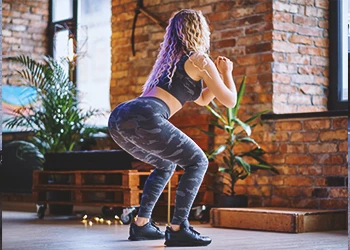
Hip thrusts are good for maximzing your glute gains because they involve hip extension exercise, which creates the best contraction and growth for your glutes.
The downward phase, or hip flexion, stretches your glutes, priming them for the subsequent hip extension.
The peak of the hip thrust (at hip extension) allows you to squeeze your glutes, which drives significant muscle development, making hip thrusts a go-to for glute gains.
“Many people will feel hip thrusts in their lower back a lot. This is because they’ll go into an overextended position at the top of the lift, really arching their back.”
- Andrew Reay, Strength and Conditoning Coach
FAQs
How Do You Activate Hip Thrust Glutes?
You should squeeze you glutes at the top of the hip thrust to activate them during the hip thrust. Based on our experience, establishing a mind-muscle connection withe glutes throughout the movement helps engage the gluteal muscles.
Why Don’t I Feel It in My Glutes When I Hip Thrust?
You don’t feel it in your glutes when you hip thrust because you may not be doing them with proper form. When this happens, other muscles — like the lower back and hamstrings — tend to take over.
Should You Go Heavy on Hip Thrust?
No, you should not go heavy on the hip thrust. For maximum hypertrophy, you should perform this exercise with a weight that allows you achieve muscle failure within do 8–15 reps per set.
References:
- https://www.ncbi.nlm.nih.gov/pmc/articles/PMC7039033/
- https://www.ncbi.nlm.nih.gov/pmc/articles/PMC6670060/
- https://www.jstage.jst.go.jp/article/jpts/27/12/27_jpts-2015-691/_article
About The Author
You May Also Like

